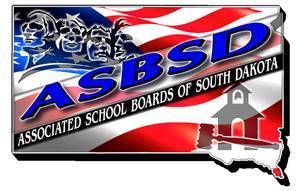Business is about to pick up in Pierre.
One hundred and five legislators descend on the Capitol City on Tuesday for the start of the 90th legislative session.
The 2015 calendar features 39 legislative days with Governor Dennis Daugaard’s State of the State Address kicking off session on Tuesday (Jan. 13).
Other key session days include Feb. 4 being the final day for bills to be introduced, ASBSD’s Legislative Day on Feb. 17, “Crossover Day” on February 25 and Friday, March 13 marks the last day of the last full week of session. “Veto Day” is scheduled for Monday, March 30.
Where It Starts
The key discussions about K-12 education legislation will start in the meeting rooms of the House Appropriations and Education and Senate Appropriations and Education committees.
Get to know the members of the House Education Committee and Senate Education Committee.
Those four committees will feature most of the important pieces of legislation that will impact school districts. The education committees will shape education initiatives and, the appropriations committees address the dollars.
“Each committee will play a significant role in the future of K-12 education,” Pogany said. “If your local legislator sits on any of those committees get in touch with them and share your district’s needs.”
House appropriations is scheduled to meet Monday-Friday at 8 a.m., House Education on Monday, Wednesday and Friday at 7:45 a.m., Senate Appropriations meets Monday-Friday at 8 a.m. and Senate Education on Tuesday and Thursday at 7:45 a.m.
In addition to those four committees, Local Government, State Affairs and Taxation committees from both chambers will hold hearings on legislation related to school boards and education.
Download the “Navigating the South Dakota Legislature website” guide here.
What We Know
Bills have been popping up on South Dakota Legislature’s website since Monday (Jan. 5) with a few catching the attention of ASBSD already.
House Bill 1005 repeals the foundation program, which serves as the funding conduit between the state and local school districts. The consequence of repealing the foundation programs is unknown.
Senate Bills 6 and 7 are related to the capital outlay and pension levy funds.
SB 6 extends the deadline for multiple provisions related to the funds from 2015 to 2019. SB 7 caps the revenue growth of the capital outlay fund at three percent or the change in CPI-W, whichever is greater, and adds an opt-out option to the capital outlay fund for school districts seeking more dollars than allotted by the levy growth cap.
Limiting the capital outlay fund’s growth and levy generated a spirited discussion between representatives from the education and ag fields, legislators and the governor’s office throughout the legislative interim.
A majority of delegates from ASBSD member districts voted to approve a new resolution – C9 Capital Outlay Compromise – that supports a potential compromise with elements that could benefit school districts should levy growth be limited.
ASBSD’s legislative platform was established at Delegate Assembly when representatives from member districts voted on the association’s legislative resolutions and standing positions.
To stay-up-to-date on legislation, bookmark the ASBSD Bill Tracker page. Download the “Navigating ASBSD’s Bill Tracker” guide here.
What We Anticipate
There’s likely to be much discussion around teacher pay this year. Studies completed by the School Administrators of South Dakota (SASD) last year generated debate at the tail end of session and throughout the interim.
Angst expressed by school districts and statistics to support the worry of a shrinking teacher pool increased the focus by many leaders across the state on the problem.
In September, ASBSD Executive Director Wade Pogany, SASD Executive Director Rob Monson and Mitch Richter of the South Dakota United School Association presented a proposal to the legislature’s planning committee that called for an additional penny increase from June-August to the state’s sales tax, which they estimated would generate approximately $40 annually, or $4,000 per teacher.
Legislation related to teacher pay has not been introduced at this time. Pogany is hopeful for positive talks about the teacher pay problem.
“We’re not sure what solutions will come out of session, but we’re hoping to have a meaningful conversation with legislators about funding sources that could be utilized to improve teacher pay,” Pogany said.
Legislation that would allow school boards to use new tactics to attract and retain teachers is also expected to be introduced.
The Common Core Standards and Smarter Balanced assessment will be hotly debated during session, as well. ASBSD supports the implementation and use of Common Core in schools.
What We Hope
We hope more legislators will take notice of and help us develop solutions for the teacher pay issue and the shrinking number of people in the teacher pool, as well as the funding concerns of and questions about the effect of limiting capital outlay expressed by districts.
“We need your help in advocating in favor of our schools,” Pogany said. “We may not win all the battles, but we need to make sure our legislators know the needs of our school districts,”
“We hope you’ll help us.”
Be sure to read the ASBSD Blog often for the latest from legislative session.
